In 2023, McLaren Automotive marks its 60th anniversary. To celebrate, we’re recalling a wonderful trio of McLarens we spent time with for a Hagerty Drivers Club magazine feature five years ago; it’s reproduced here, tweaked only to reflect subsequent events. —Ed.
By all accounts, the ancient Clan MacLaren were fighting folk. Their rallying cry, “Creag an Tuirc” (the Boar’s Rock), is either a tribute to their steadiness in battle or to the hardiness of their lasses. Or to the actual Boar’s Rock, a grassy promontory in central Scotland. When not stealing cattle or running spikes through the neighbors, the MacLarens liked to gather there for haggis roasts—except maybe in summer, when the swarming midges will eat a man alive. No wonder the ancestors of Bruce McLaren, the ambitious Kiwi who built a racing empire and whose name today graces a Formula 1 team as well as a line of dreamy sexpot supercars, got the hell out of there.

The McLarens might have gone to California, where we’ve gathered a triumvirate that represents the high points of McLaren road-car production. It consists of the stunning first attempt, the 1969 M6GT; the incomparable second draft, the 1993 F1; and the breathtaking latest edition, the 2018 720S. Lined up and brooding, their bat-wing doors open and beckoning, they certainly come across as cars from a clan of fighters.
But the early McLarens didn’t come to California. They went all the way to the Switzerland of the South Pacific. This story would seem to start in New Zealand, where a young Bruce McLaren overcame Perthes disease, a childhood hip malady that put him in bed for two years and gifted him with a twisted spine and a shortened left leg, to become the most promising antipodean driver since Jack Brabham.
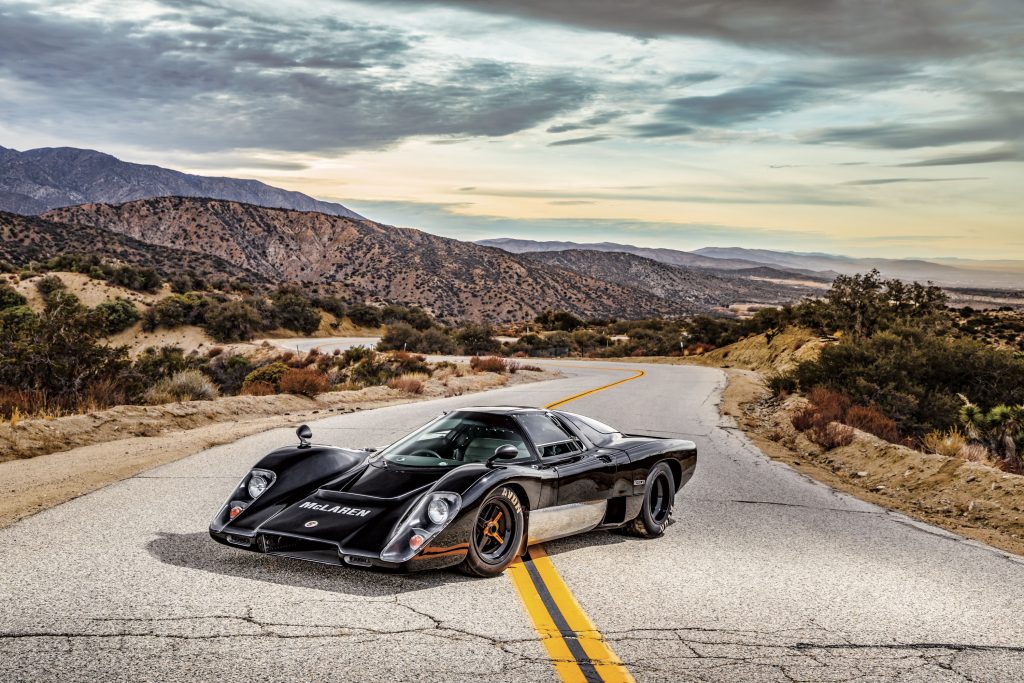
New Zealand proved too small for a talent such as McLaren’s, however, so we could start this story in clammy England, where Bruce went to seek his fortune in 1958, and where he produced his first car in 1964 in a dilapidated equipment shed. Just four breakneck years later, McLaren was fielding winning cars in Formula 1 and Can-Am, and in 1972, a McLaren conquered Indianapolis as well. Road cars were always somewhere in the back of McLaren’s mind, and today, McLaren Automotive builds a line of roadgoing, mid-engine doorstops in suburban Woking, southwest of London, at a site that looks like Starfleet Academy’s auto shop.
But really, this is a story that starts in America. It’s here that 22-year-old Bruce McLaren found his greatest success, becoming at Sebring the youngest driver to win a Grand Prix, a record that stood for 44 years. And it’s where the roaring Oldsmobile and Chevrolet engines came from that first put McLarens in the spotlight. And where Can-Am victories paid Bruce McLaren his biggest prize money in those early lean years. Thus, any celebration of the man and his cars has every right to be here amid the dry manzanita and pussytoe and rustling pine of the mountains above Los Angeles, not so far from the antiseptic shopping mall that sits profanely on the grave site of the old Riverside Raceway.
The December morning cuts with a high-desert chill as the trailers and rollbacks arrive one by one, dispensing their cherished cargo. The first to show is the McLaren 720S, a cab-forward, mid-engine mega-wedge with android-insect styling, multicolour touch screens, shifter paddles, a new road-to-roof carbon-fibre tub that shrinks the A-pillars practically down to pencil width, and a chorus of electronic ding-dongs to alert the driver of the many concerns on its electronic superbrain. The sticker reads $378,215 (£301,000), including more than $18,000 (£14,300) in optional carbon-fibre exterior parts, and the McLaren dealership in fashionable Newport Beach, California, recently announced that it will accept payment in bitcoins.
Next to arrive is the opposite bookend of McLaren’s road-car efforts, an M6GT replica. It has a steering wheel. It also has three pedals. It has a four-inch-high shifter that comes out of the firewall to the right of the driver on a polished metal stick. The electronics: a few rocker switches, some of which actually work. The only sound this McLaren makes is an unholy explosion of fury from the twin megaphones of its circa-700-horse Chevy stroker as its longtime owner, Allen Korneff, backs it down the trailer’s beavertail. The 16-inch Avon racing slicks in back look cartoonishly wide. “They do grab,” says Korneff with a sly smile.
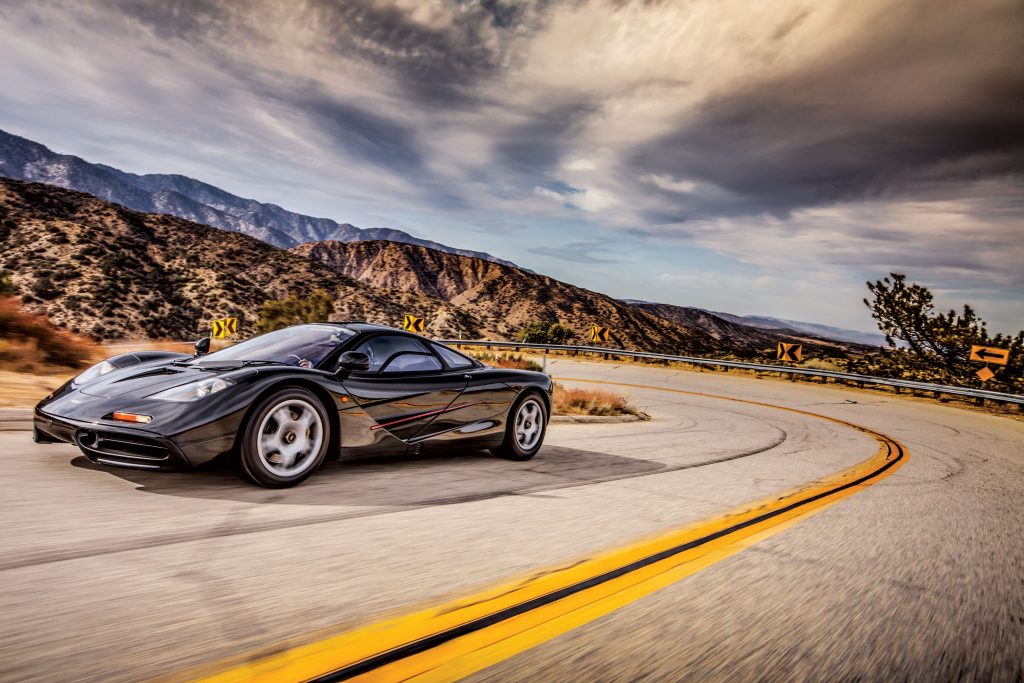
Finally, a rollback pulls up, and a crowd forms around it – partly because it has one of the mere 64 original short-tail street McLaren F1s ever made and partly because in the truck’s passenger seat is our columnist Jay Leno, the car’s original owner. Leno leaps out and, despite having arrived back in L.A. from the East Coast only about four hours earlier, and sporting a hacking cough, he strides over to introduce himself to the various attending officers from the California Highway Patrol, the Los Angeles Fire Department, the California Department of Transportation, and the US Forest Service. Cellphones whip out.
The F1’s tidy, elegant shape is as fresh and riveting as it was at its lavish launch party at the 1993 Monte Carlo Grand Prix. It’s clear that designer Gordon Murray was receiving signals from heaven or Planet 10 or perhaps the future, because the combined efforts of Ferrari, Lamborghini, and even McLaren have yet to produce a successor so thoroughly inventive or so immediately iconic. Sure, the fashions have changed since this voluptuous three-seater debuted, as have the safety rules. But after only the briefest, barely measurable period of depreciation, the F1 today steadily grows more appealing and, indeed, more valuable. A brown one with fewer than 250 miles on the odometer sold at Monterey in 2021 for an astonishing $20,465,000 (£14.8M).
With the rollback tilted down, Leno scrambles into the middle bucket and thumbs the starter, and the F1 crawls down the ramp, a stark contrast to the M6GT bellowing as it sits. Now that all three McLarens are on pavement, we insert ourselves behind the wheels, pull down the upturned doors until they latch with a satisfying click, and head off, a 28-cylinder spectacle paying tribute to a man who packed a heck of a lot into his short life.
We call the M6GT a replica, and it is. But it’s as close as you can get to one of the original four (or six, or eight—you read different numbers) M6GTs that came out of McLaren or its assembly partner, Trojan Cars. Allen Korneff built it in the mid-1970s off the chassis of a former Peter Revson M6B Can-Am car unsuccessfully campaigned by Shelby-American Racing in the 1968 season. Where the 383 Chevy small-block now sits in front of a ZF racing five-speed transaxle, there was once a Ford 427 SOHC screamer, spiked with a mohawk of velocity stacks and, as it happens, stricken with a fatal flaw. According to Korneff, who says he heard it from Carroll Shelby himself, the engine’s long chains tended to stretch and the cams would go off timing. Per his contract with Ford, Shelby stripped the motor and sent it back to the factory. What Korneff bought in the mid-’70s for $7500 (£3500) was a used-up race car with a beat-up body.
But Korneff had plans. A hospital administrator by day and a street racer by night, he wanted a car that could keep up with the hot new Porsche 911 Turbos that his friends were bringing out to the recently completed Foothill Freeway north of downtown Los Angeles, where speed jockeys once went in the wee hours to test their top ends. Korneff’s pathologist, also a friend of Carroll Shelby’s, suggested the idea of buying Shelby’s M6B chassis and making an M6GT out of it using a body made for him by Specialised Mouldings, the same British fibreglass supplier that made the skins for the original M6GTs. To accurately replicate the original, Korneff found himself chasing a hodgepodge of industry scraps from the day, including taillights off a Volvo P1800 and front turn signals from a London taxi. He also added air conditioning.
“It took a lot longer and cost a lot more than I thought,” says Korneff. “I was in for about $40,000, plus three man-years of my time. But I learned a lot of stuff.
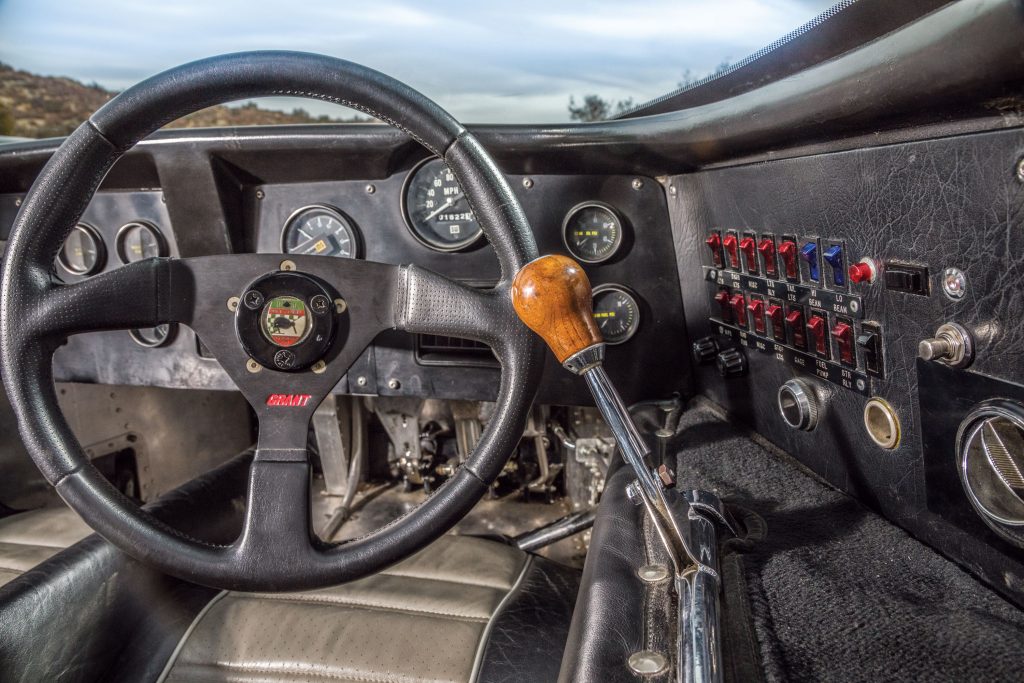
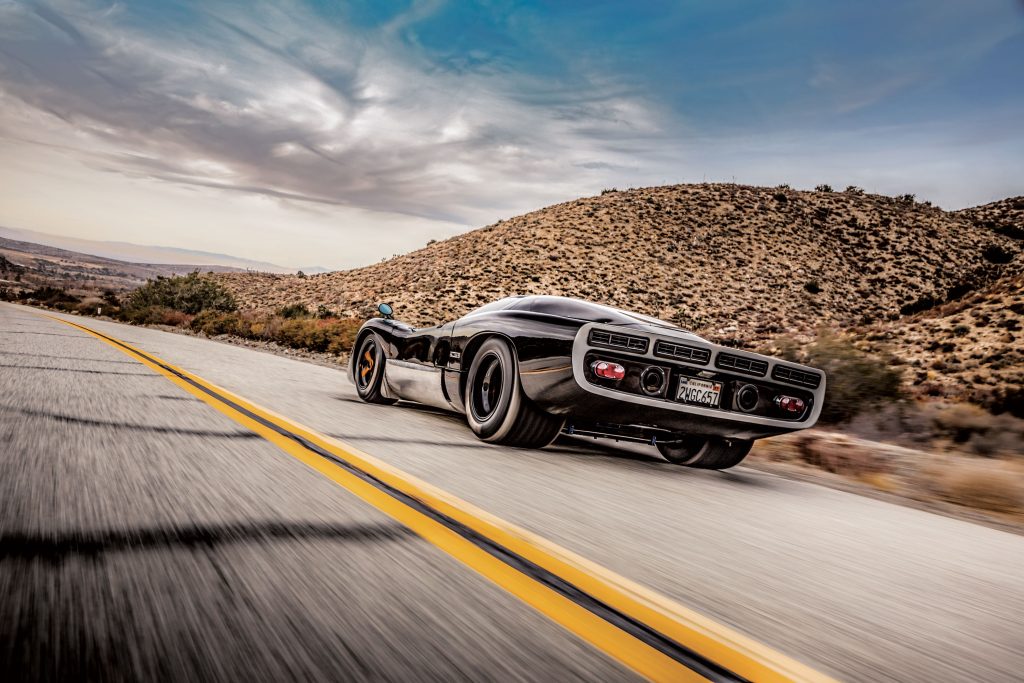
The sleek black-and-silver limpet is sized for Bruce McLaren, who was not tall. Even with the steering wheel removed, it’s a slithery contortion act to slide in over the 18-inch-wide sill hiding the outboard fuel tanks and down into the nearly horizontal acceleration couch that is the pair of conjoined seats. The car swallows you up, like a close-fitting fibreglass body bag, and only the sight of the old Dutray pit clock at Le Mans would make the view forward between the double humps of the front wheel arches any more authentically race car. Flip the switch and push the start button, and after some lively cranking, Krakatoa blows at your six-o’clock.
The steering column slews out of the centre of the metal dash at a crazy angle, the wheel cockeyed in your hands as though you’ve already crashed the car. The wheel, as well as the metal guillotine that passes for the dash, hangs very low, so moving your legs around to operate the pedals is nearly impossible. Legs cramp, shins get bruised.
After a couple of false starts in third gear – the roughly 1950lb car didn’t stall, it just moved off a bit more slowly – the notchy five-speed shifter proved a reliable bolt-action device with about two inches of total travel at its base. The 383 has only two modes: ridiculously loud and, closer to the red hash mark on the Stewart Warner tach denoting the 6500rpm redline, unbelievably louder, sounding like all nine seasons of the original Can-Am series uncorked at once in Dolby stereo. Put the spurs to it, and the car blasts forward on a plume of white-hot decibels, the landscape going streaky and your heart rate instantly tripling as your primordial snake brain goes haywire.
As advertised, those chubby Avons do have a lot of grab, and after some tentative probing of the grip at moderate speeds, the tyres and the chassis prove capable of so much more. You expect it to be rock-rigid, but the suspension has some give, swallowing the road lumps and squishing a bit to the outside as the car takes a corner. The wide, flat pancake of a tush actually squats under acceleration, and you get the sense that this is how it was, that in the age before carbon-fibre hybrid diesel/electric slot cars, good race-car drivers were masters at managing these relatively compliant suspensions.
Waiting for cameras to be set up, I lean down into the open F1 where Leno is sitting impassively in the car’s thin and delicate-looking command chair, the dry-sump, 6.1liter, 627bhp BMW S70/2 V12 idling with a soft tick of injectors and distant zing of timing chains. He invites me to take the starboard seat, which for a normal adult male is a snug leather scoop best occupied with your arms folded. You pull the door down via a small hand grip in the roof and release the door with a lever in the seat.

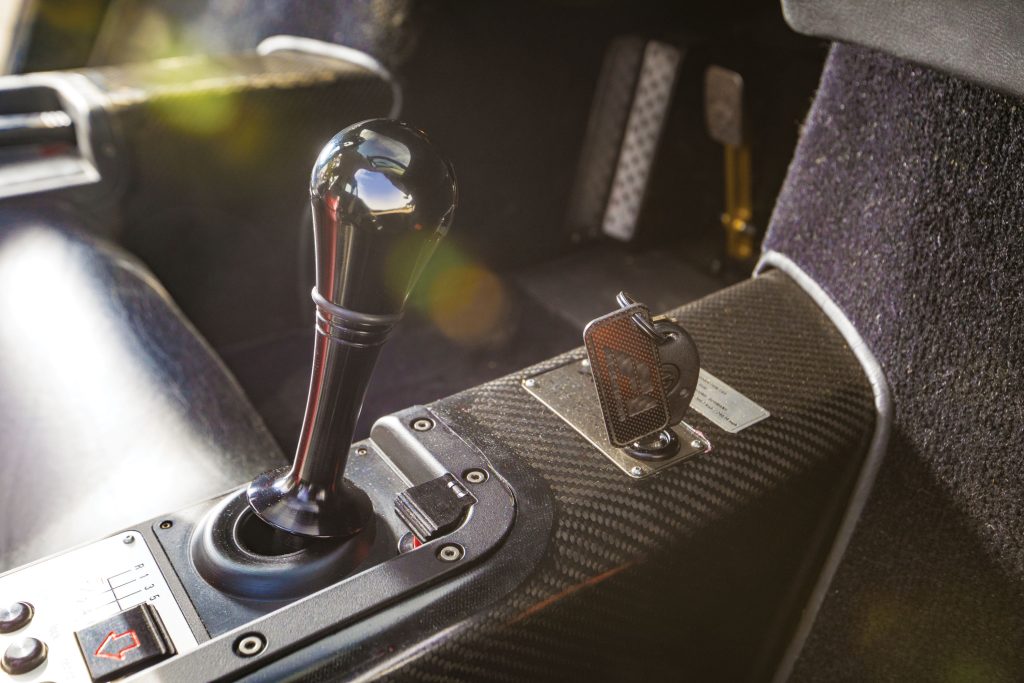
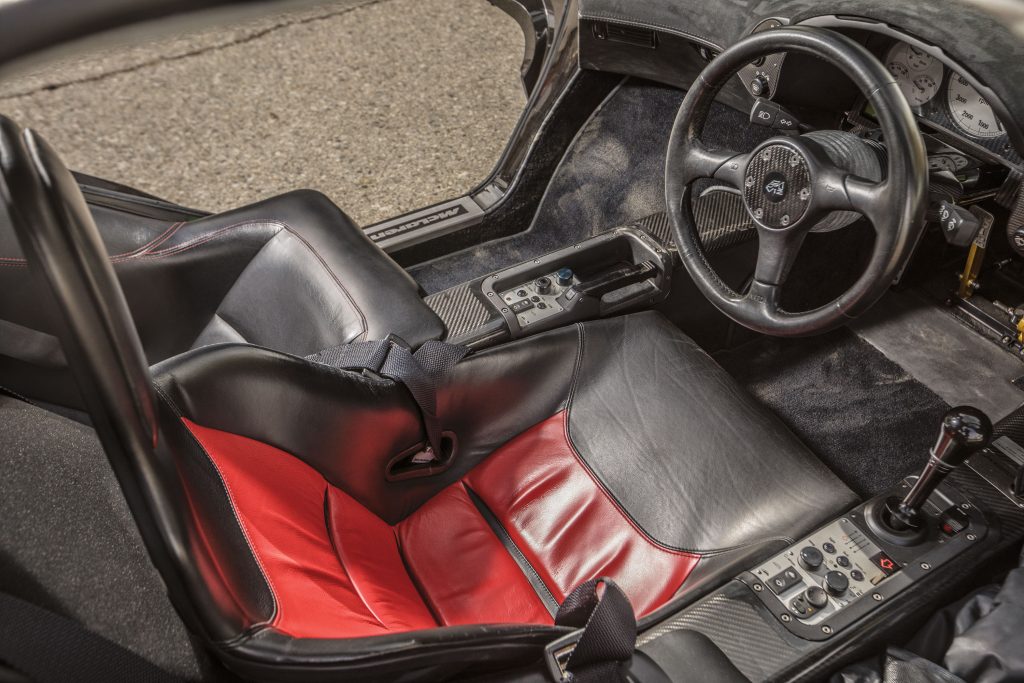
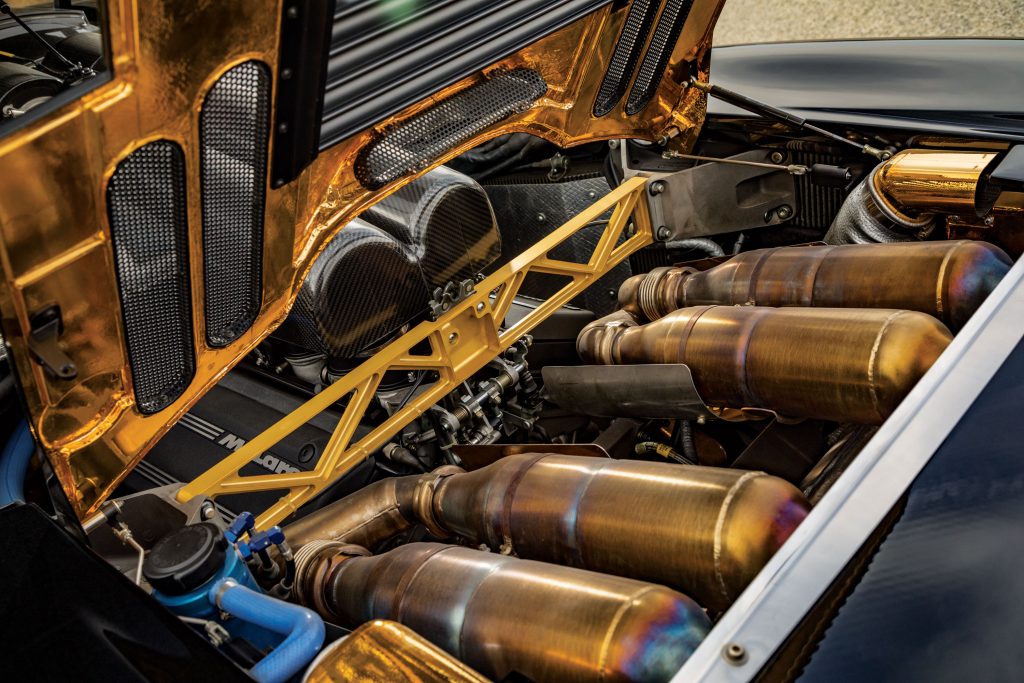
It’s hard to overstate the weirdness of sitting to the side and just a bit behind the driver, who has a few knobs and a hand-brake pull on his left side, the gear shifter and more knobs on his right, and, thanks to the triangular seating arrangement, unlimited elbowroom to work the delicate three-spoke wheel. In a normal car, the passenger is sort of a co-pilot, not in control but at least on an equal plane. Move the passenger seat(s) back a few inches, and suddenly you feel like baggage. Or, as one of Leno’s mechanics would later quip to me, like you’ve been arrested.
But oh, that sound. The engine’s airbox arcs over the head of the driver as part of the headliner that leads to the roof duct, which means you’re sitting in the speaker cabinet of the engine. Goose the throttle, and the syncopated suck of 12 cylinders erupts all around you, as if you’d suddenly been dropped into the Monte Carlo tunnel circa 1968. The quick, linear blitz of revs to the 7500rpm redline happens with a shove of thrust and a crescendo of heavenly combustion glissando that future generations, growing up on the whoosh and whir of turbo and hybrid supercars, will sadly never know. Never was a car so aptly named or appreciating in value for such obvious reasons.
One big thing about the F1 is that it’s just so deliciously understated. There is nothing in the low, suede-and-leather cockpit or on the ballet slipper of a body that doesn’t need to be there. Only the Porsche 959 was even close to being this authentic, maybe the Ferrari F40. Other contemporary exotics such as the Lamborghini Diablo and Ferrari Testarossa were romping circus acts by comparison, extravagant leftovers from the pompous ego trip that was the 1980s. The F1 was the car James Bond badly wanted but Her Majesty’s Secret Service couldn’t afford.
“Back then, the idea of plugging a computer into the car so technicians back in England could read the codes was unheard of,” says Leno. “Still, when I bought it, it was just a car. I drove it almost every day for five years.” Well, at almost a million bucks a copy (back when a million was real money), it wasn’t just any car. But now it’s a collector-car colossus, and too valuable for even Leno to take out except on special occasions and by prior appointment.
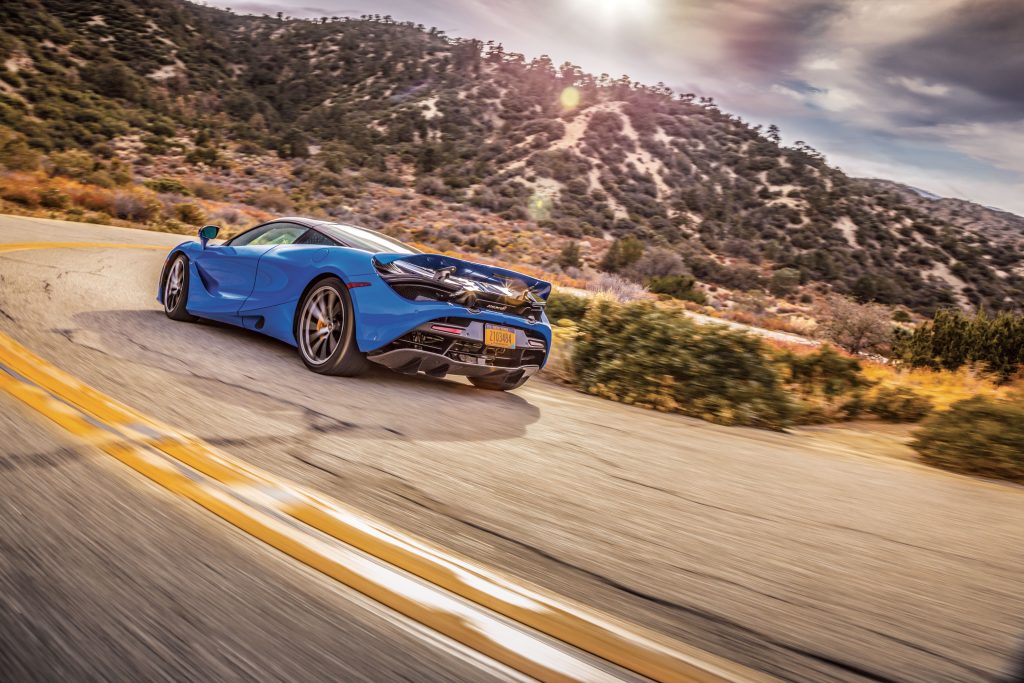
The mostly carbon-fibre 720S shows how far things have come in two decades. Crammed with hidden cables and solenoids and all-seeing sensors, it’s fitted with a touch-screen command centre plus an all-digital thin-film transistor instrument cluster. Switch the car to its raciest “track” mode, and the cluster folds down on silent motors to present the driver with a Formula 1–style light-bar tachometer. Organic-looking gills on the rear body funnel air into and out of the engine compartment, and you wouldn’t be surprised to see them breathing in and out.
This is by far the easiest car to get into, with the most legroom, the highest ceiling, the best visibility, an arctic blast when the air conditioning engages, and paddles to operate the transmission. That is, if you even want to; the computer will happily do it for you. Push the start button, and the engine lights instantly, a gruff bark out the back in defiance of the two muffling turbos hanging off the 4.0liter, 710bhp V8.
Everybody who takes a turn in the 720S comments not on how fast or how tight it is – although it is those things – but on how easy it is to drive. The wheel feels like an extension of your neural network and responds to a delicate touch, placing the car’s prow exactly where you desire it, there to be welded to the pavement against terrific side loads by the prodigious grip. At a pace that would make F1 and M6GT drivers sweaty with effort, the 720S doesn’t even squeal its tyres, the turbos huffing and whooshing in sync with your right foot to make massive torque even down in the basement of the tach.
McLaren had a heck of a time topping its limited-production P1 hybrid of 2013–15, as well as this car’s direct predecessor, the 675LT. The company is also in a thermonuclear horsepower war with its arch nemesis, Ferrari, and the 720S edges out the Ferrari 488GTB by a crucial (to some) 49 horsepower. Yep, it’s all about numbers today, and here are some: Using computer-orchestrated launch control and eye-blink-quick upshifts, the 3153lb 720S murders 60mph in 2.7 seconds and the quarter-mile in 9.9 seconds – both astonishing figures, especially for a two-wheel-drive vehicle. The 1000bhp Bugatti Veyron was barely any quicker.
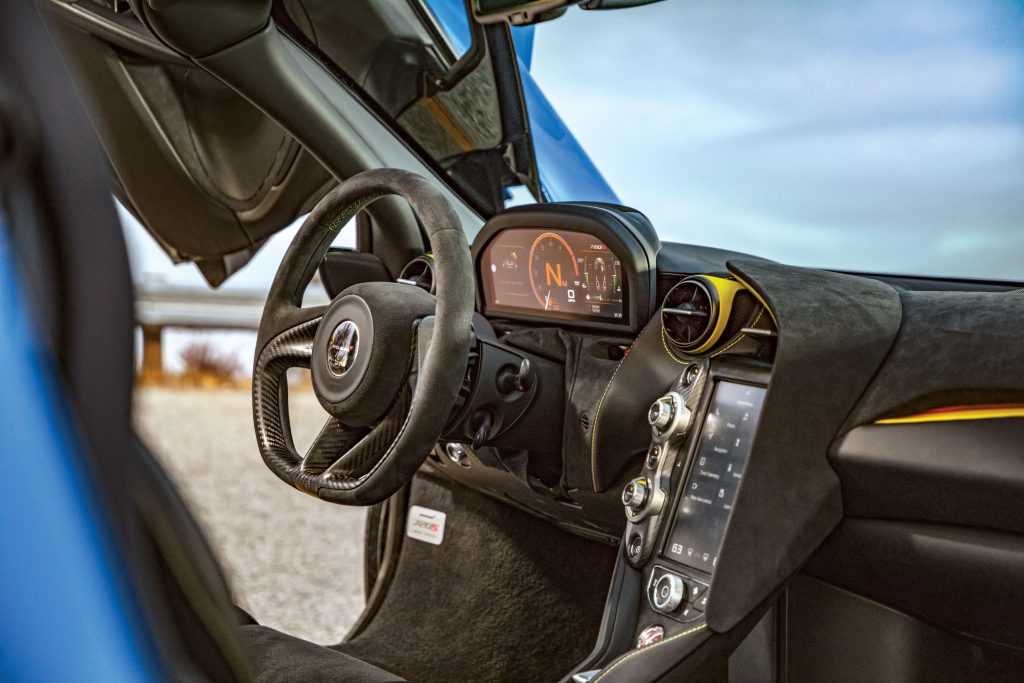
The 720’s stats nicely frame the outlandishness of the 25-year-old McLaren F1, which weighed a mere 2579 pounds and did the deeds in 3.2 seconds and 11.1 seconds, respectively. Those were unheard-of numbers for a stock sports car in its day and still quicker than all but a few cars made today. An M6GT running a 400ci Chevy with Weber IDA carburettors was said to have pulled the quarter in 12.7 seconds. But back then, acceleration numbers were far less important than lap times and podium places and prize money. Perhaps that’s how it should be today.
At the old Goodwood circuit, where Bruce McLaren was turning test laps in a prototype M8D Can-Am car until the rear bodywork failed at 170mph, they cleared a small garden next to the paddock and put up a memorial black headstone. “Bruce McLaren 1937–1970,” it reads. “Engineer. Constructor. Champion and Friend.” And even though that dismal Tuesday in June was over 50 years ago, they are still making monuments to the most famous son of the Boar’s Rock. Indeed, the best kind, the ones that roll on wheels and strike terror in the rival clan of Maranello. We doubt young Bruce would have wanted it any other way.









